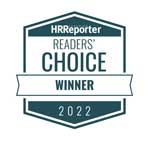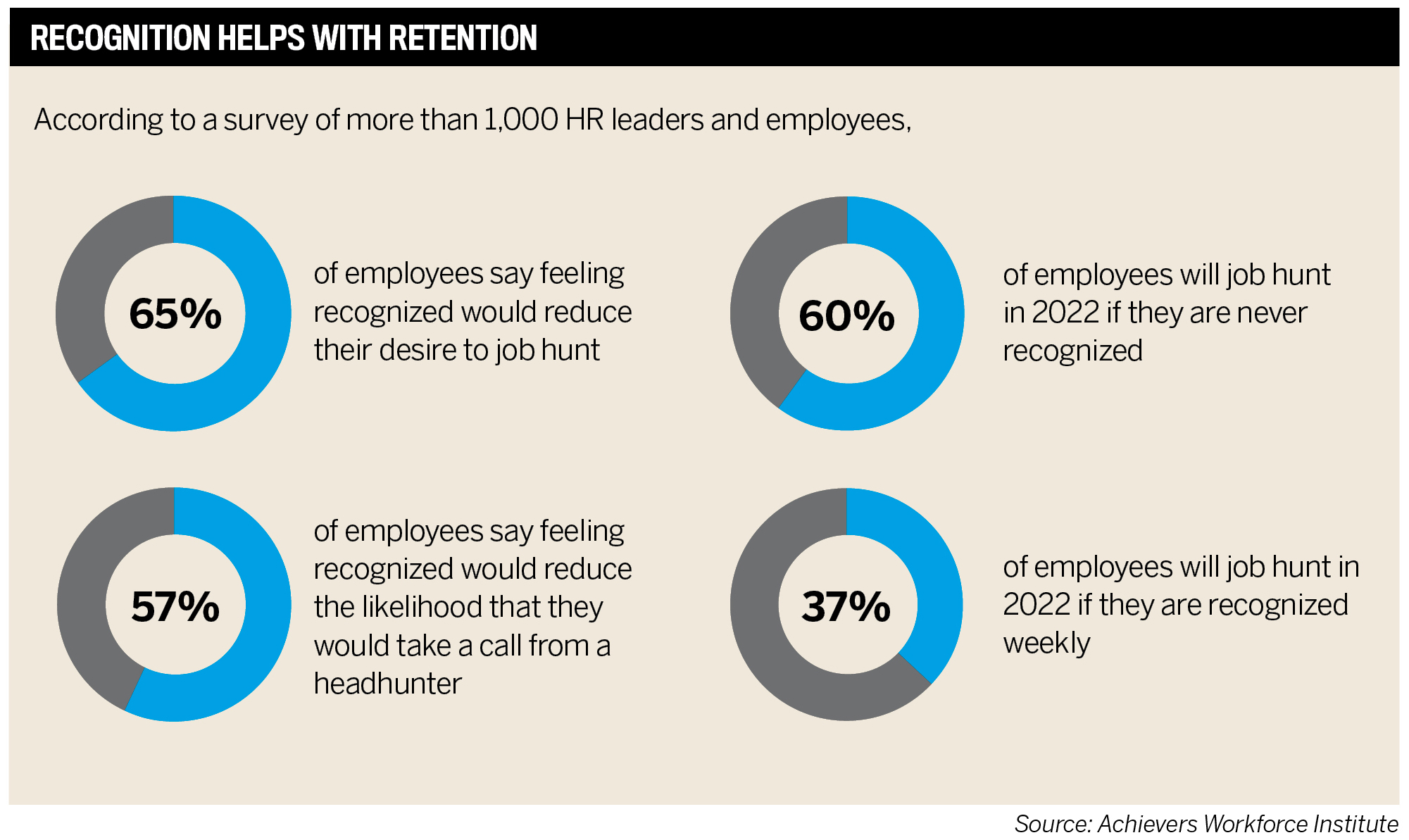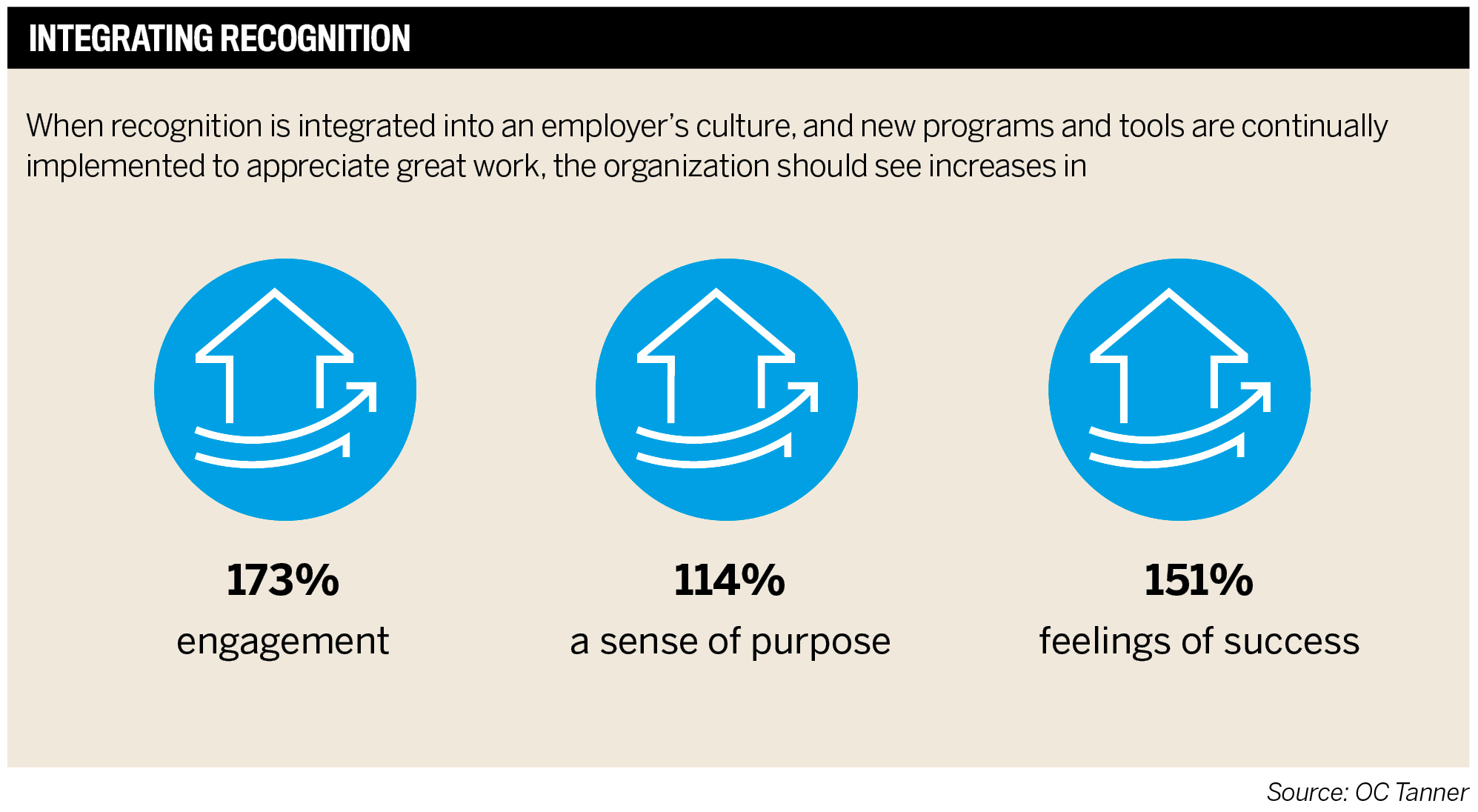

Jump to winners | Jump to methodology
Health and safety, employment law, work from home, vaccine mandates – they’ve all been big priorities for HR with the rise and fall of the pandemic.
But employee recognition plays a crucial role through all of this, say several of this year’s Readers’ Choice winners, in connecting people both at home and in the workplace, rewarding their best efforts, and revealing both the strengths and weaknesses in teams, along with any problematic silos.
“We used to talk a lot about employee engagement for a number of years, but now it seems to be more about connection, employees feeling connected to the organization, to their colleagues and to the purpose of the organization”
Chris Vyse, OC Tanner

“The pandemic actually creates a lot of opportunities, and it just seems to continue,” says Chris Vyse, vice president of sales and marketing at OC Tanner in Burlington, ON.
Virtual tools have soared in popularity, for example.
“We used to talk a lot about employee engagement for a number of years, but now it seems to be more about connection, employees feeling connected to the organization, to their colleagues and to the purpose of the organization. It’s required creativity, and that continues now that we’re in the hybrid model,” he says.
But it’s worth the effort: Almost two-thirds (64 per cent) of employees responding to an OC Tanner survey in 2021 regarded recognition as more important when working from home, says Vyse.
“When we were pre-pandemic, as a manager or leader, you would think about the recognition presentation and maybe make some notes and then kind of wing it. But now that it’s virtual, I find we’re doing PowerPoint [presentations] and putting in photos and actually making them a lot of fun,” he says. “Plus it’s a wider audience who could participate; we’re a global company so people [from afar] that have worked with somebody that’s being recognized can choose to jump in as well.”
Despite all the changes, it’s still about respecting the fundamentals, “so making sure that the recognition is frequent, specific, timely, tied to the company’s values, or to exactly what the person did, whether they went above and beyond or if it’s an anniversary… then tie it back to their career body of work and some of the things that they’ve accomplished over the years.”
“When times are good, you want to recognize and appreciate your employees, but in the midst of challenging times, you really need to recognize and appreciate your employees”
Mike Byam, Terryberry
While many hard-hit employers had to make budget cuts during the pandemic, for the most part, investments in employee recognition either stayed the same or increased, according to Mike Byam, executive chairman of Terryberry in Grand Rapids, MI.
Why? Many employers recognized that they needed to make some shifts on how recognition was delivered, he says.
“It’s been encouraging that even in this time, with so many different challenges, people recognize the value of it.”
While many employers were already moving towards digital recognition and engagement platforms, the pandemic “really accelerated the need for that, so we got a lot more adoption,” says Byam.
And while the public health crisis has been mitigated, employers still face the challenges of the Great Resignation, with many people deciding to leave their jobs or switch careers.
“The lack of appreciation of performance is one of the things that’s driving the resignation and people moving jobs. So that’s something that can be addressed more inexpensively,” he says.
“When times are good, you want to recognize and appreciate your employees, but in the midst of challenging times, you really need to recognize and appreciate your employees.”
And despite the rise of hybrid work, in-person recognition is still important, says Byam.
“People are aching to get in-person for recognition, it’s such a personal event — the value of the handshake, the pat on the back, looking someone in the eyes, knowing that your peers are out there being part of that,” he says. “We’re certainly not back to pre-pandemic levels, but customers that you talk to are looking forward and working towards that.”
“Everyone’s trying to look for ways to stave off the Great Resignation and we think, in a cheeky way, that the ‘great recognition’ is one of the ways that organizations can do that”
David Bator, Achievers Workforce Institute
Considering the budget cuts prevalent during the pandemic, it’s notable that a recent survey of more than 1,000 HR leaders and employees by Achievers Workforce Institute in Toronto found that more than half of employees who felt recognized for their efforts saw less of a negative impact if faced with a salary freeze, according to David Bator, managing director of the Institute.
A further 57 per cent said that feeling recognized would reduce the likelihood that they would take a call from a headhunter, while 65 per cent said that it would reduce their desire to look for a new job.
“Everyone’s trying to look for ways to stave off the great resignation and we think, in a cheeky way, that the ‘great recognition’ is one of the ways that organizations can do that,” he says.
The pandemic has shown that while employees may have been out of sight, they can never be out of mind. They always have to be heard, says Bator.
“Employees need to feel five things: they need to feel welcomed, known, included, supported and connected. And where we think recognition has great utility is in fostering those types of connections, especially as organizations embrace, if not remote work, then some sort of hybrid model.”
As a result, more organizations are going to invest in the digital infrastructure required to recognize people from anywhere, he says.
“Recognition, especially in the context of a digital workplace, has enormous value in connecting people who are dispersed to the people and the pure validated skills that they need to be productive. This is why platforms are so important.”
As an example, when Bator joined his organization in the midst of the pandemic, he didn’t meet any colleagues in person for a year.
“As I took on new tasks, going into our recognition program to search for things that I was doing and uncovering the people who had been peer validated for having done a great job made it really easy for me to say, ‘Oh, I should go speak to this person or that person, and see what they did to maybe save me time,’” he says.
“Recognition, in that way, has a lot of value.”

With the massive rise of the hybrid work model, there is definitely increased interest in employee recognition, says Tom Short, founder and chief customer officer at Kudos in Calgary.
“How do you maintain culture and connect with people and build that? That camaraderie, you can’t do it in Teams, you can’t do it in Outlook; you can communicate and collaborate in those items, but it doesn’t really facilitate the ability to celebrate the good things that are going on, and to align people to your core values, and to have that general camaraderie that you would normally have in an office setting.”
Amidst the Great Resignation, recognition is the glue that holds us together, he says.
“If you and I just know each other on Zoom and we’ve never met each other and we have never gone for lunch and we’ve never talked about the social things that people do in the office, the next time I see a recruiter calling me and they’re offering more money, what’s my hook to stay? So now, in this situation, Kudos definitely helps bridge that.”
As workers face hardships leading to burnout and fatigue, employee recognition programs can let people know they’re not alone by being a virtual water cooler to support mental and financial wellness, says Short.
Also important is connecting the silos that have emerged because of the virtual world and the rise of Zoom calls. That’s the “next opportunity and challenge,” he says, to “be like a fly on the wall so that you can understand how people are, who they’re connecting with, and who’s contributing in what ways.”
That doesn’t necessarily come out in surveys or performance reviews, says Short.
“Kudos allows you to take on more of that proactive, predictive, foresight area because I can actually see, on a day-to-day basis, how the team is doing and how an individual is doing by their amount of recognition and communication.”
The survey for the Readers’ Choice Awards 2022 took place between February 28 and March 25, 2022. Canadian HR Reporter compiled nominations to create an impressive list of vendors and suppliers in the HR community from across the country, based on the team’s knowledge and additional research within each area.
Readers were invited to cast their ballots through an online survey, and responses were completely confidential. Survey participants were invited to select up to a certain number of organizations, depending on the category. A participant could nominate additional organizations that did not appear on the list if they thought they should be considered.
Three nominees who received the highest number of overall votes were awarded the Readers’ Choice designation.